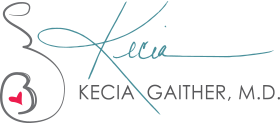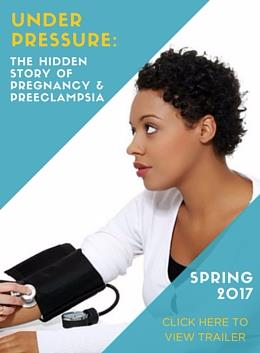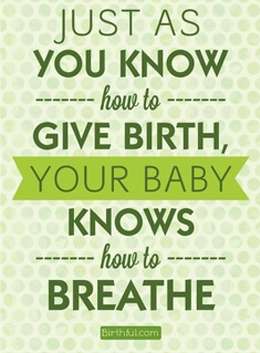Every year, we hear so much about breast cancer during the month of October – and it can never hurt to reinforce your knowledge of what’s normal and what isn’t. However, new research and misconceptions mean there’s always something more to learn about this extremely common disease.
In order to debrief you on the latest, we asked a slew of specialists what women need to know about breast cancer that they might not already realize and boiled it down to these 14 key points. Here’s what they had to say. How many of these facts did you know?
1. Your diet could predispose you to breast cancer. Research has shown eating a diet high in fat could put you at greater risk of developing breast cancer – and there’s more and more evidence surfacing to support it. The European Prospective Investigation into Cancer and Nutrition (EPIC) study has looked at this particular relationship. Remember to fill up on your greens, lean protein and veggies over fatty foods.
2. Breast cancer is not just one illness. There are actually many, many different forms of the disease. “The type is dependent on where in the breast the cancer originates,” says Dr. Kecia Gaither, MD, MPH, FACOG at Brookdale University Hospital and Medical Center. “It could be ductal, inflammatory, metastatic, for example.” There’s no one breast cancer, and no one treatment either.
3. Most breast cancer survivors have noted sexual dysfunction. “The causes of which are both physical and psychological,” says Gaither. It could be medication, an onset of menopausal symptoms, or even a mastectomy altering a woman’s view of her body. In one study, the rate of sexual dysfunction occurred in 70 percent of participants, so survivors should seek the appropriate support from their partner, as well as doctors or therapists if needed.
4. Any change in the breast should be brought to a doctor. No matter how small, it’s important to speak up. “Changes may include lumps, skin changes or nipple discharge or new nipple inversion,” says Maryam Lustberg, MD, a breast medical oncologist at The Ohio State University Comprehensive Cancer Center – James Cancer Hospital and Solove Research Institute. So, make sure you take time to know your breasts, she says.
5. Breast cancer is the second most common cancer. “It is also the second leading cause of cancer deaths among women in the US,” says Rebecca Moroose, MD, medical oncologist at UF Health Cancer Center – Orlando Health. More than 232,000 Americans will be diagnosed with breast cancer this year.
6. The cure rate for breast cancer is over 90 percent. That’s the good news – but you have to catch it and treat it early, says Dr. Moroose. “A breast cancer diagnosis is not a death sentence,” she says. “Overall five-year survival of breast cancer is over 95 percent, and newer treatment options have made this a chronic disease that women live with for long periods of time.”
7. Incidence increases dramatically with age. “Some women think older women are less likely to get breast cancer, but risk actually increases with age,” says Nikita Shah, MD, medical oncologist at UF Health Cancer Center – Orlando Health. At age 30, there’s a 1-in-2,200 chance of developing cancer, a 1-in-220 chance at age 40, and a 1-in-8 chance by age 80.
8. Men get breast cancer, too. Breast cancer is not simply a woman’s disease. “One percent of all breast cancers are seen in men,” says Dr. Shah. “And treatment is very similar to women.” So, if your man detects a strange lump in his pectoral region, he should go see his doctor.
9. Mammograms do not detect all breast cancers. “In reality, mammograms detect only 80 to 85 percent of cancers,” Dr. Shah says. “If a mammogram is normal and you feel a lump, see your doctor right away anyway.” It could still be dangerous.
10. Painful lumps can be cancerous. There’s a misconception that pain in a lump means cancer isn’t present. However, while it isn’t one of the most common symptoms, pain does not rule out the possibility. “About 10 percent of breast cancer lumps can be painful, so do not ignore any lumps,” says Dr. Shah.
11. Birth control doesn’t put you at risk. You needn’t worry about hormones from the pill. “It’s a myth that birth control pills cause breast cancer,” says Dr. Shah. “Modern day birth control pills actually have a low dose of hormones. Today’s birth control pills can even protect against ovarian cancer.” So, you can rest easy.
12. Family history does not play as prominent a role as you think. Only 8 percent of breast cancer is familial in nature – that being said, there is still a slight risk. “Some believe that only your mother’s family history of breast cancer can affect your risk,” says Terry Mamounas, MD, surgical oncologist at UF Health Cancer Center. “Breast cancer in either parent can affect risk equally.” Even still, 90 to 95 percent of diagnoses have no family history of the disease, so it’s not a major player in terms of risk factors.
13. Alcohol increases your cancer risk.“A woman who drinks two alcoholic beverages a day will up her cancer risk by 20 percent,” says Dr. Robert Wesolowski, breast medical oncologist at The Ohio State University Comprehensive Cancer Center. He says risk correlates pretty directly with the number of drinks you have per day. It’s as simple as this: the more you drink, the higher your risk; the less you drink, the lower your risk.
14. Obesity and sedentary lifestyles may up your risk of developing cancer. It can actually increase your risk of breast cancer by 20 to 90 percent. “On the other hand, studies have also shown low-calorie diets and regular exercise has reduced recurrent cancer risk by 24 percent in women who have already survived the disease once,” says Dr. Wesolowski. So, avoiding the disease is yet another reason to maintain a healthy lifestyle.
CHEAT SHEET: Here are some breast cancer basics, in case you’ve missed anything along the way:
- Breast cancer has more than a 90% cure rate if discovered and treated early.
- Perform a breast self-exam monthly, beginning at age 20.
- Get a clinical breast exam every one to three years beginning at age 20.
- Get a clinical breast exam every year after age 40.
- Get a mammogram every year beginning at age 40.
- Common symptoms include a lump or mass in breast, enlarged lymph nodes in the armpits, and changes in breast size, shape, skin texture or color.
- Remember: two out of every 100 cases of breast cancer are in women under the age of 35. If you feel something is wrong, get a medical opinion, no matter your age.






